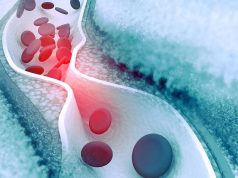Suboptimal responders have increased risk for incident cardiovascular disease
TUESDAY, April 16, 2019 (HealthDay News) — More than half of patients initiating statin therapy have a suboptimal low-density lipoprotein cholesterol (LDL-C) response within 24 months, according to a study published online April 15 in Heart.
Ralph Kwame Akyea, M.B., Ch.B., from the University of Nottingham in the United Kingdom, and colleagues conducted a prospective study of 165,411 primary care patients who were free of cardiovascular disease (CVD) before statin initiation. Participants had at least one pretreatment LDL-C within 12 months before and one posttreatment LDL-C within 24 months after statin initiation.
The researchers found that 51.2 percent of patients had a suboptimal response to statin therapy within 24 months, defined as a reduction of <40 percent in baseline LDL-C. During 1,077,299 person-years of follow-up, there were 22,798 CVD events: 12,142 and 10,656 in suboptimal and optimal responders, respectively. Compared with optimal responders, suboptimal responders had an unadjusted hazard ratio of 1.17 for incident CVD; the hazard ratio was 1.22 after adjustment for age and baseline untreated LDL-C. The subhazard ratios for unadjusted and adjusted cumulative incidence function of CVD were 1.13 and 1.19, respectively, when competing risks were considered.
“Effective implementation of guidelines among health care practitioners and the general population has been a challenge for a long time,” write the authors of an accompanying editorial. “Both physicians and patients should be targets for approaches aiming at improving adherence to guidelines.”
Copyright © 2019 HealthDay. All rights reserved.








